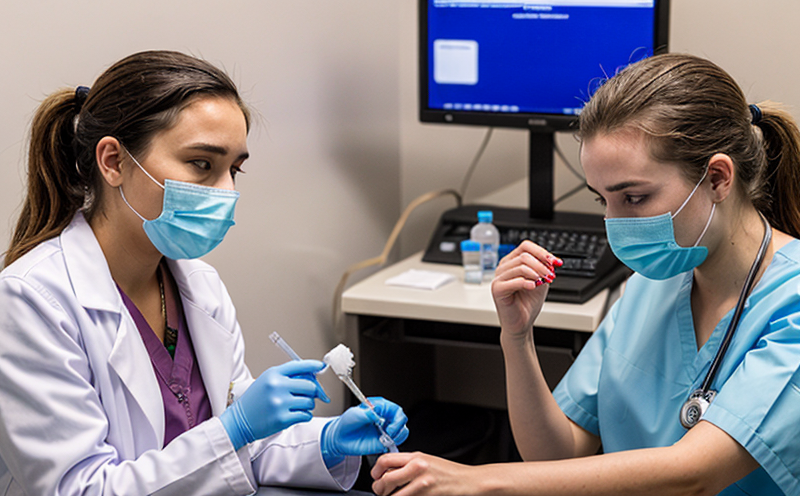CLSI M45 Susceptibility Testing for Fastidious Bacteria
The Clinical and Laboratory Standards Institute (CLSI) M45 method is a standardized protocol designed to evaluate the susceptibility of fastidious bacteria, which are organisms that require specific growth conditions. These bacteria often include species such as Mycoplasma spp., Ureaplasma urealyticum, and Campylobacter jejuni. The significance of this test lies in its role within the clinical microbiology laboratory, ensuring that antibiotics are appropriately prescribed to treat infections caused by these fastidious organisms. Accurate susceptibility testing is crucial for optimizing therapeutic outcomes and minimizing the development of antibiotic resistance.
The CLSI M45 method uses a microtiter plate format, providing a reliable means of assessing antibiotic susceptibilities under controlled conditions. The test involves inoculating a standardized broth or agar medium with the bacteria, followed by the addition of various concentrations of antibiotics. After incubation, growth inhibition zones are measured and interpreted according to specific guidelines provided in the CLSI document M45-A.
The specificity and accuracy of the CLSI M45 method are enhanced through rigorous quality control measures. Laboratories must adhere to strict protocols for media preparation, inoculum concentration, antibiotic dilutions, and incubation conditions. The test's reproducibility is further ensured by regular calibration and validation against reference strains.
| Antibiotic Classes | Susceptibility Zones (mm) | Interpretative Criteria |
|---|---|---|
| Penicillins | >18 mm for Mycoplasma pneumoniae | Growth inhibition indicates resistance. |
| Azithromycin | <14 mm for Campylobacter jejuni | Growth within this zone suggests susceptibility. |
| Macrolides | >20 mm for Ureaplasma urealyticum | Zones greater than the specified value indicate resistance. |
The CLSI M45 method is essential in clinical microbiology laboratories where the identification of fastidious bacteria often presents challenges due to their specific growth requirements. The test's precision and accuracy are vital for ensuring that clinicians have reliable susceptibility data, which directly impacts patient care.
- Ensures appropriate antibiotic selection for infections caused by fastidious bacteria.
- Aids in reducing the incidence of treatment failures and drug-resistant infections.
- Supports compliance with clinical guidelines and regulatory standards.
The CLSI M45 method is a cornerstone in the diagnosis and management of respiratory, urogenital, and gastrointestinal tract infections. It plays a pivotal role in guiding antimicrobial therapy and improving patient outcomes.
Benefits
Implementing the CLSI M45 method brings several advantages to clinical microbiology laboratories:
- Informed Decision-Making: Provides clear, standardized data for antibiotic susceptibility testing of fastidious bacteria.
- Patient Safety: Ensures that patients receive appropriate and effective antimicrobial therapy.
- Quality Assurance: Facilitates compliance with clinical standards and regulatory requirements.
- Economic Efficiency: Reduces the need for additional diagnostic tests by providing accurate susceptibility data upfront.
The method's standardized approach ensures that laboratories can consistently deliver reliable results, contributing to better patient care and overall healthcare efficiency.
Industry Applications
| Infection Type | Bacteria Involved | Susceptibility Testing Method |
|---|---|---|
| Pneumonia | Mycoplasma pneumoniae | CLSI M45-A |
| Gastroenteritis | Campylobacter jejuni | CLSI M45-A |
| Urogenital Infections | Ureaplasma urealyticum | CLSI M45-A |
The CLSI M45 method is widely used in clinical microbiology laboratories to assess the susceptibility of fastidious bacteria. This ensures that clinicians can select the most appropriate antibiotics for treating infections caused by these organisms, thereby improving patient outcomes and reducing the risk of treatment failure.
Fastidious bacteria are particularly challenging due to their specific growth requirements, making accurate susceptibility testing even more critical. The CLSI M45 method provides a reliable means of achieving this precision, supporting clinical decision-making in various infection types.
Quality and Reliability Assurance
The reliability and accuracy of the CLSI M45 susceptibility testing for fastidious bacteria are paramount to ensure that laboratories provide accurate results. Quality assurance (QA) measures play a crucial role in maintaining these standards:
- Standard Media Preparation: Ensures consistent growth conditions for the bacteria.
- Inoculum Concentration: Maintains uniformity across tests to ensure comparable results.
- Antibiotic Dilutions: Precisely calibrated to provide accurate susceptibility zones.
- Incubation Conditions: Strict adherence to temperature and time parameters ensures consistent growth patterns.
Laboratories must also participate in proficiency testing programs, such as those offered by the College of American Pathologists (CAP) or Clinical Laboratory Improvement Amendments (CLIA), to continuously validate their methods. Regular calibration against reference strains further enhances the accuracy and reliability of susceptibility testing results.
The commitment to QA ensures that clinical microbiology laboratories can consistently deliver accurate and reliable test results, supporting informed decision-making in patient care.





